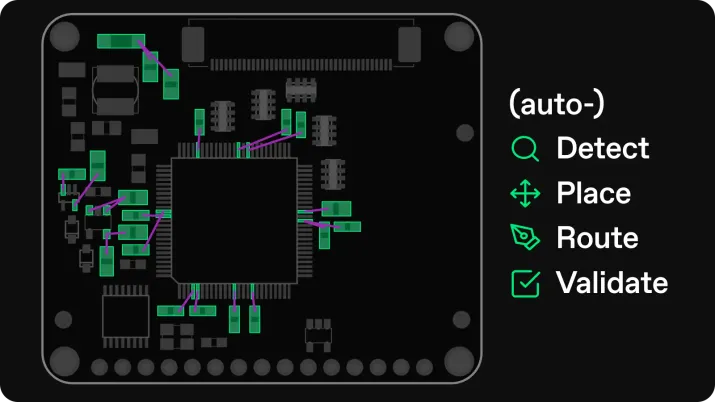Robert Krone’s path to Quilter didn’t follow the straight lines of a circuit board—it wound through algebraic geometry, academic postdocs, and the design of futuristic auto parts. “I was starting to feel like maybe the work that I was doing, the academic work that I was doing wasn’t like as impactful as I would like,” he recalled. That desire for tangible, world-shaping outcomes led him out of academia and into software for manufacturing. His story reminds us why Humans in the Loop matters: at Quilter, great tools come from people who seek meaning in their craft as much as precision in their code.
Origins
Robert grew up on the Upper West Side of Manhattan, a city steeped in possibility but far removed from his eventual career in engineering software. His academic foundation was steeped in pure mathematics. “I studied pure math, like algebraic geometry and commutative algebra, and I did my PhD at Georgia Tech,” he said. Postdoctoral fellowships at Queen’s University in Ontario and UC Davis followed.
Although his work was theoretical, he gravitated toward applications—coding, algorithm design, and connections to statistics and biology. Still, academia brought ambivalence. “I wasn’t 100% sure if academia was the right final tone for me,” he admitted. The deeper realization was about impact: he wanted his work to touch the real world, not just other equations. That spark—longing for relevance and utility—would propel him into industry.
Journeys in Engineering
Robert’s first leap beyond academia was with Divergent3D, a later-stage startup building software for automotive part design. “They’re like creating software to automate the design of auto parts… geometry optimization going on to create shapes for the structural parts of the car,” he explained. It was there he encountered the raw realities of production software. “I learned a lot about meshing, and also just like writing production code. I’d written a lot of software, but it was… academic stuff, usually just kind of proof of concept.”
At Divergent3D, abstract geometry became physical—organic-looking structural frames, 3D-printed and glued into working vehicles. For Robert, the experience cemented the importance of bridging math and manufacturing. It also sharpened his appreciation for how startups amplify individual impact: “It is pretty cool working for like a smaller startup and feeling like the work that each individual is doing is really affecting the trajectory in a big way.”
Why Quilter?
When Robert considered his next move, alignment mattered more than prestige. “I really liked that Quilter is working on building actual things,” he said. “The design process for making circuit boards is so ubiquitous and generally useful—that’s something I feel pretty strongly about. I would not, for instance, ever work for a social media company.”
Quilter’s mission gave him what academia lacked: tangible results with broad reach. Printed circuit boards, unlike the proofs of algebraic geometry, underpin almost everything in modern technology. His expertise in geometry, algorithms, and production-ready code found a natural home in Quilter’s challenge of automating design at scale. And in a small, fast-moving team, he relished that each contribution “is affecting the trajectory in a big way.”
Beyond the Workbench
Away from work, Robert’s world is anchored by his young family. “I have two young kids, so that’s taking up most of my time these days,” he shared. Still, he makes room for play—Ultimate Frisbee, basketball, and board games with friends. He has a soft spot for video games, particularly the atmospheric exploration of Hollow Knight. Foodwise, his pick is simple but refined: “I feel like you can’t go wrong with sushi if you’re gonna have like a nice meal.”
His reflections also reveal a wry self-awareness. Asked about tattoos, he mused, “Sometimes I’ve wondered, should I get a tattoo? But… I just never come up with something that’s singularly representative of my identity.” It’s a telling remark for someone whose life resists reduction to a single mark—preferring instead a landscape of overlapping pursuits.
A Line to Remember
“I liked that was sort of what was missing when I was in academia—the sense that the work was having a real tangible effect on the world.”
Closing Note
What stands out in Robert’s story is the insistence on relevance. From pure math to circuit boards, his trajectory reflects the heart of Quilter: channeling deep technical craft into outcomes that matter, where every line of code carries weight in the physical world.

















